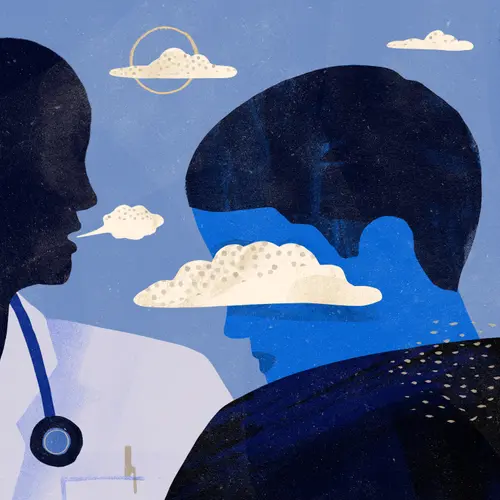Your doctor prescribes medicine, and you take it as directed. That’s how it’s supposed to go. If you take prescription drugs for another reason, such as to get high, that’s abuse.
Prescription drug abuse is a growing problem in the U.S. More than 20% of people age 12 and older have taken a prescription medicine for a nonmedical reason. But not everyone who takes them -- or even abuses them for a short time -- becomes addicted.
Addiction is a disease that changes the way you think and act. Over time, you need larger doses of the drug to get the same feeling. Soon, you take them just to feel normal. You can’t control your urge for the drug, despite the damage that it causes to your life and relationships. <!--td {border: 1px solid #ccc;}br {mso-data-placement:same-cell;}--> Learn how to spot the warning signs of addiction.
Causes and Risk Factors: Who Gets Addicted?
There’s no way to tell who’ll get hooked. Addiction is a complex disease brought on by many reasons, including your lifestyle and genes. But it often starts when you start to use prescription drugs for something other than the purpose prescribed by your doctor. This might be a desire to:
- Improve mental focus for school or work
- Lessen social anxiety
- Eat less and lose weight
- Increase alertness
- Feel “buzzed” or high
- Relax or ease stress
- Experiment with different mental states
- Prevent withdrawal symptoms from regular use
- Win approval from a social group
In addition, experts have found that certain people may be more likely to become addicted. If you have:
Alcohol, tobacco, or other drug addiction: If you’ve struggled with drugs, you’re more likely to get addicted. The same goes for tobacco and alcohol.
Family history of addiction: A family member with a drug or alcohol problem raises your odds, too. You may have inherited genes that put you at risk: Research suggests that at least half of your likelihood of becoming addicted is linked to genetic factors.
Your age: Prescription drug abuse is most common in young adults. In fact, 12% of people ages 18 to 25 have taken them for a nonmedical reason. Why? Young people are more likely to experiment. They may try a painkiller to get high or take a stimulant to study better.
Mental illness: A condition like anxiety, depression, or posttraumatic stress disorder raises your odds. That’s because certain prescription medicines like opioid painkillers can ease that emotional distress. These drugs attach to tiny parts of your nerves and block feelings of emotional pain. This can lessen your worry or sadness. Therefore, if you’re prescribed a painkiller for a broken leg, you may be tempted to keep taking it even after it’s healed.
Access to prescription drugs: To become addicted, you need to have drugs available. Most of the time, people get them because:
- A doctor prescribed them. Yours wrote a prescription for your bad back or knee surgery. This doesn’t mean you’ll become addicted, but it can raise the odds. Research shows that people with health problems and acute or chronic pain are more likely to abuse prescription drugs. But doctors understand the risk of addiction better, and they’re more cautious about writing prescriptions. They also monitor their use closely.
- Someone in your household takes or abuses prescription drugs.
- You live in an area or community where there’s drug abuse. You may experience peer pressure to take drugs or see others using prescription drugs.
Lower Your Risk
There are some steps you can take:
- Work closely with your doctor. If they prescribe medicine, tell them about your risk factors. They can take steps to make sure you use the drugs as intended.
- Get rid of prescription medicines properly. Don’t leave old drugs in your medicine cabinet. Ask your pharmacist how to do it safely.
- Educate yourself and others. It seems simple, but if you don’t know about the dangers of prescription drugs, you’re more likely to misuse them. Teach your kids about abuse. It can start at a young age: Six percent of children ages 12 to 17 have taken a prescription drug for a nonmedical use.

